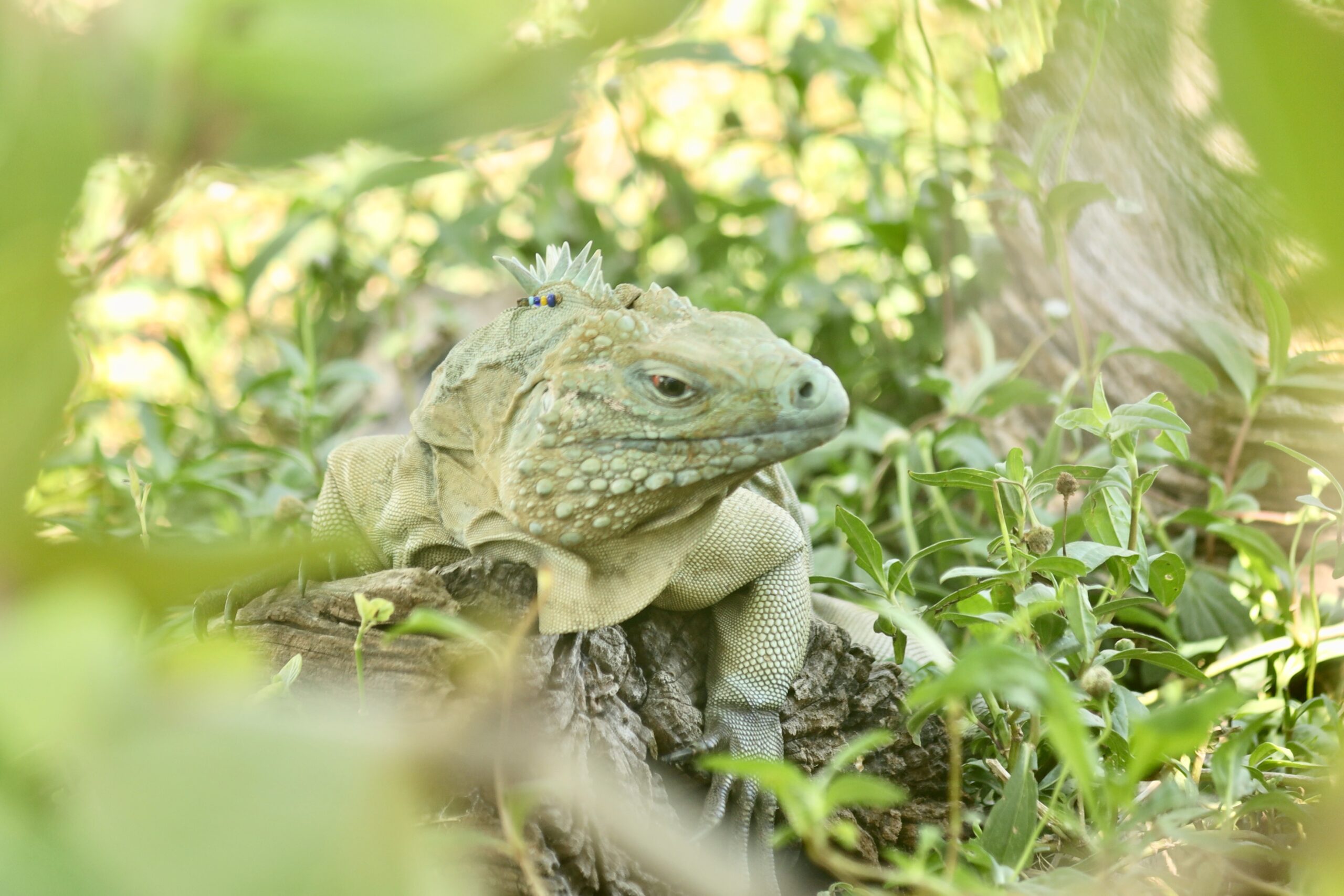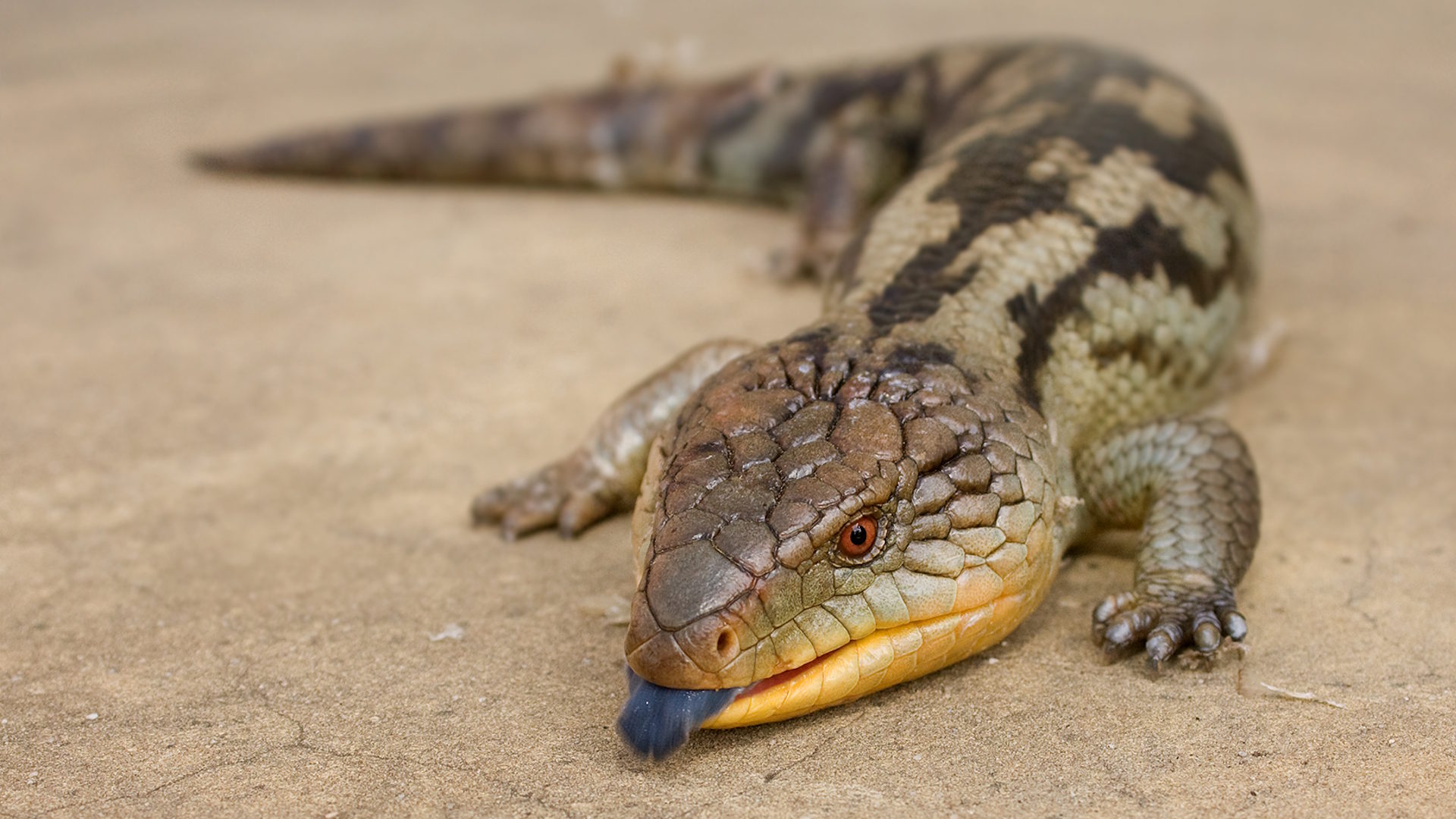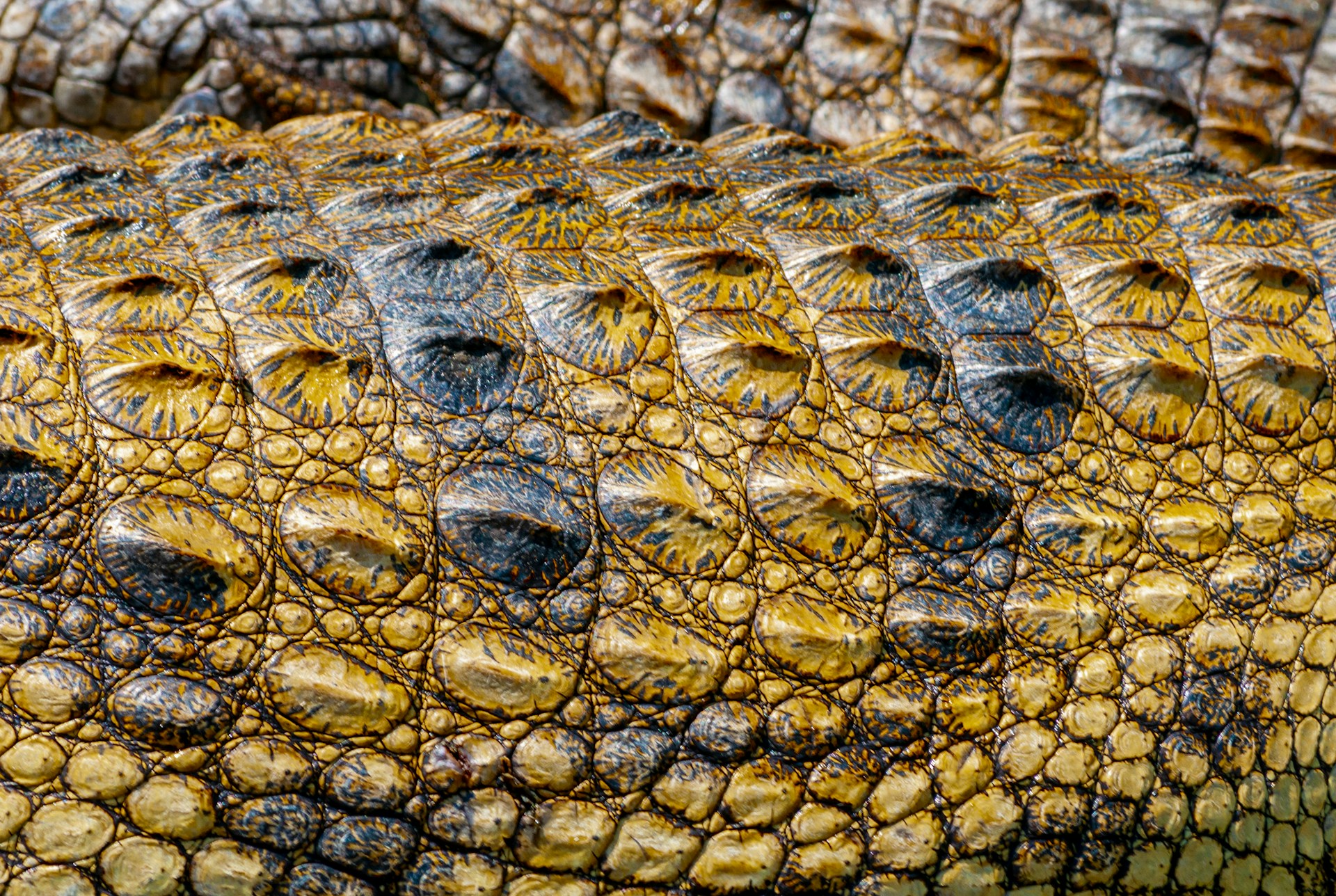In the shadow of our world’s biodiversity crisis, reptiles represent some of the most vulnerable yet overlooked species facing extinction. With their ancient lineages stretching back hundreds of millions of years, these remarkable creatures have survived multiple mass extinctions only to face their greatest challenge in the human era. According to the International Union for Conservation of Nature (IUCN), over 21% of evaluated reptile species are threatened with extinction—a silent crisis unfolding with far less attention than the plight of mammals or birds. From tiny island-dwelling lizards to magnificent sea turtles, critically endangered reptiles face a perfect storm of habitat destruction, climate change, poaching, and invasive species. Their potential disappearance represents not only an irreplaceable loss of evolutionary heritage but also the disruption of ecological systems where they play vital roles. This article explores the most imperiled reptile species on our planet and examines the crucial question: with focused conservation efforts, innovative strategies, and global cooperation, can we pull these extraordinary animals back from the brink?
The Cuban Crocodile: Island Predator in Peril
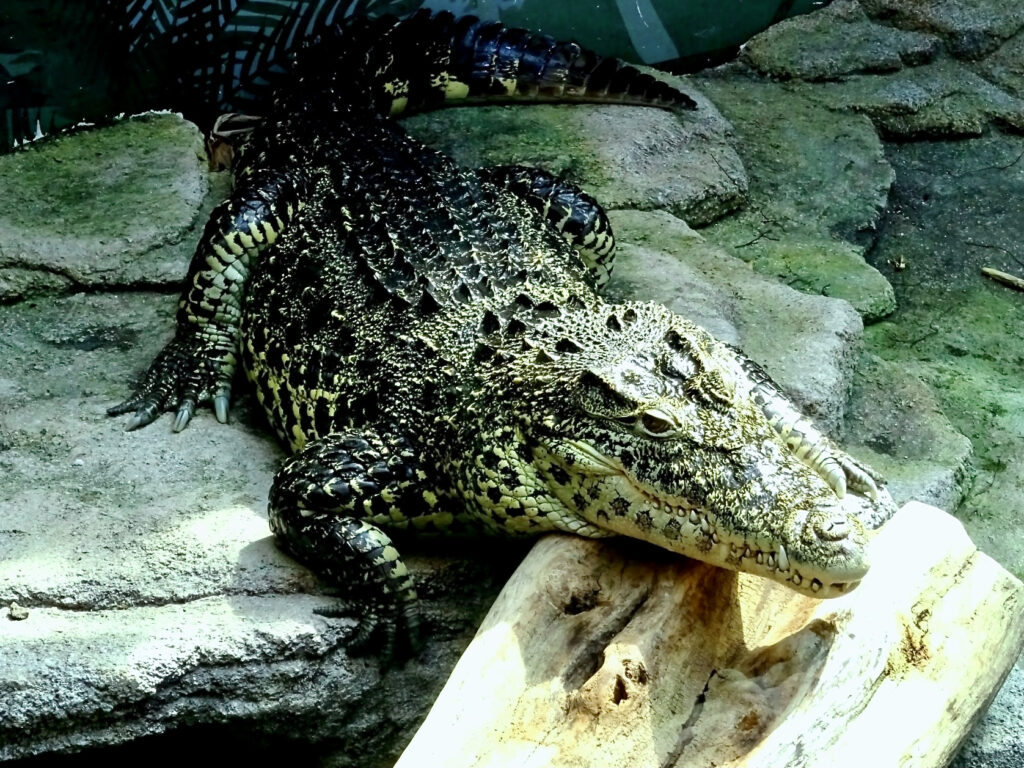
The Cuban crocodile (Crocodylus rhombifer) stands as one of the world’s most endangered crocodilians, with fewer than 3,000 individuals remaining in the wild. Confined primarily to the Zapata Swamp in Cuba, this distinctive species faces a dual threat from habitat degradation and hybridization with American crocodiles that dilutes their unique genetic makeup. With their powerful hind legs allowing them to “gallop” on land and specialized snouts for catching prey, these medium-sized crocodiles represent a remarkable evolutionary adaptation found nowhere else. Conservation efforts include captive breeding programs at facilities like the Zapata Crocodile Farm, which works to maintain genetic purity and reintroduce individuals to protected areas. Scientists believe the species can recover if hybridization is controlled and habitat protection is strengthened, particularly as Cuba’s relatively intact wetland systems provide hope compared to many other critically endangered reptile habitats.
Ploughshare Tortoise: The Golden Shell Coveted to Extinction

Perhaps no reptile better illustrates the devastating impact of the illegal wildlife trade than Madagascar’s ploughshare tortoise (Astrochelys yniphora), with fewer than 100 individuals estimated to remain in the wild. Their distinctive golden-domed shells have made them among the most valuable reptiles in the black market pet trade, where individual animals can fetch tens of thousands of dollars. Endemic to a tiny region of northwestern Madagascar, these tortoises have a painfully slow reproductive rate, producing just a few eggs annually and taking up to 20 years to reach sexual maturity. Conservation strategies have become increasingly desperate, including physically engraving shells with identification marks to reduce their black market value and deploying armed guards to protect remaining populations. The Durrell Wildlife Conservation Trust has established a captive breeding program that represents a genetic lifeline, though experts fear wild populations may be functionally extinct without immediate intervention against poaching networks.
The Jamaican Iguana: A Species Back from the Dead
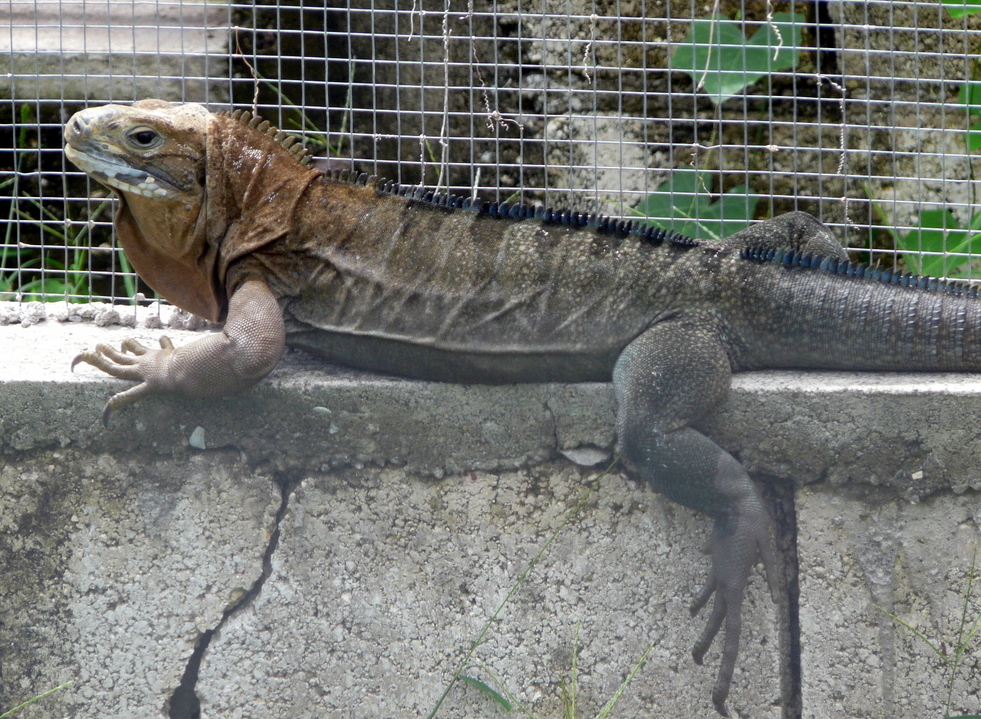
The Jamaican iguana (Cyclura collei) represents one of conservation’s rare success stories, having been presumed extinct until a small population was rediscovered in 1990 in the Hellshire Hills. This remarkable reptile, which can grow to over five feet in length, was decimated by the introduction of non-native mongooses to Jamaica in the 1800s, which preyed relentlessly on iguana eggs and hatchlings. Today, fewer than 200 mature individuals exist in the wild, though intensive conservation efforts have begun to turn the tide. The Recovery Program combines headstarting (raising hatchlings in protected environments until they’re large enough to resist mongoose predation), invasive predator control, and habitat protection. Scientists have documented increasing wild nesting activity, offering a blueprint for how dedicated, long-term conservation programs can rescue reptiles from the brink of extinction. The species’ future remains precarious, however, as bauxite mining threatens to destroy their last remaining habitat in the Hellshire Hills.
Gharial: The River Crocodile with a Distinctive Snout
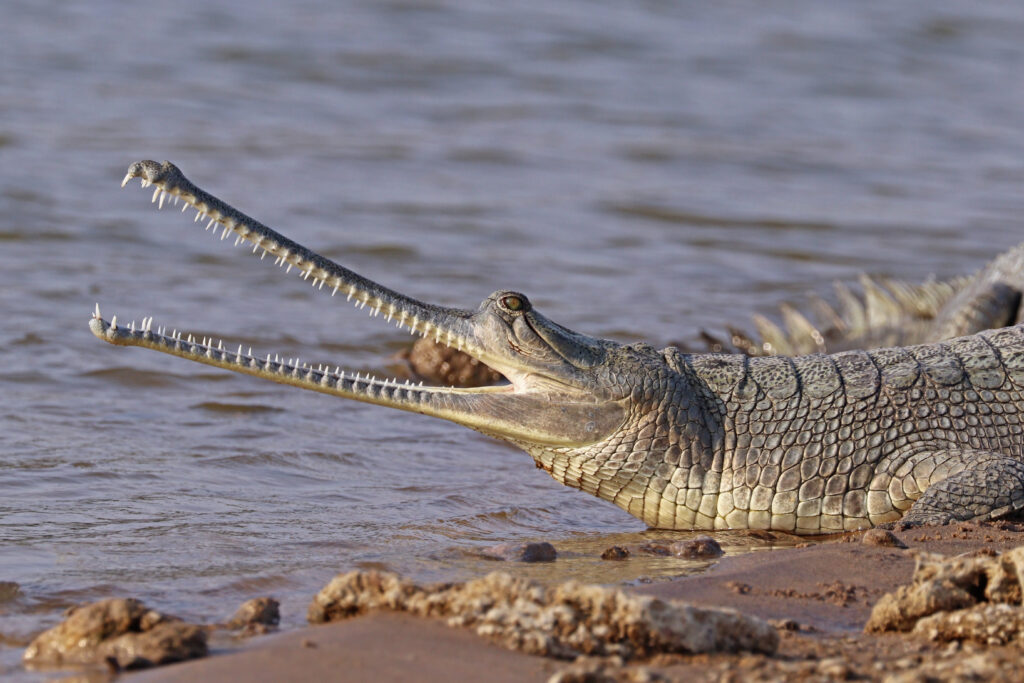
The gharial (Gavialis gangeticus), with its distinctive bulbous nasal appendage and needle-like teeth, represents one of the most specialized and ancient crocodilian lineages, evolved specifically for catching fish in fast-flowing rivers. Found primarily in rivers of the Indian subcontinent, this magnificent reptile has suffered catastrophic population declines of over 98% since the 1940s, with fewer than 250 breeding adults remaining in the wild. Dam construction has fragmented their habitat, while river pollution, fishing net entanglement, and sand mining have decimated remaining populations. The National Chambal Sanctuary in India serves as their last major stronghold, where conservation efforts include nest protection, captive rearing, and the establishment of protected river corridors. Recent successes include increased nesting in the Chambal River sanctuary, though the species faces an uncertain future as freshwater ecosystems throughout their range continue to degrade under intense human pressure.
Kemp’s Ridley Sea Turtle: The Most Endangered Sea Turtle

The Kemp’s Ridley sea turtle (Lepidochelys kempii) holds the unfortunate distinction of being the world’s most endangered sea turtle species, with its primary nesting beach at Rancho Nuevo, Mexico once hosting tens of thousands of nesting females before dropping to just a few hundred by the 1980s. These small, gray-green turtles face a gauntlet of threats throughout their range, including fishing gear entanglement, marine pollution, beach development, and egg harvesting. Unlike other sea turtles that nest individually, Kemp’s Ridleys engage in “arribadas” where females come ashore simultaneously in large groups, making them particularly vulnerable to mass harvesting. Binational conservation efforts between Mexico and the United States have included strict protection of nesting beaches, establishment of a secondary nesting colony at Padre Island National Seashore, and requirements for turtle excluder devices in shrimp trawls. Though still critically endangered, the population has shown modest recovery from its lowest point, increasing from fewer than 300 nesting females in the 1980s to around 7,000-9,000 today.
Grand Cayman Blue Iguana: Island Giant Making a Comeback
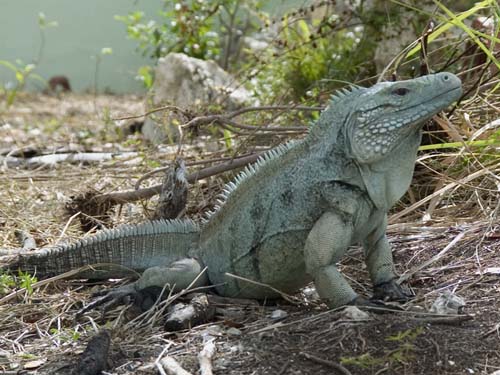
The Grand Cayman blue iguana (Cyclura lewisi) demonstrates how targeted conservation can pull a species back from the very edge of extinction, having numbered fewer than 25 individuals in the wild in 2002. These magnificent, turquoise-colored reptiles, which can grow up to five feet long and live for 60 years, are endemic to Grand Cayman Island where they faced decimation from introduced dogs and cats, habitat loss, and vehicle strikes. The Blue Iguana Recovery Program, led by the National Trust for the Cayman Islands, established a captive breeding facility and protected habitat in the island’s east, systematically rebuilding the population through careful genetic management. Today, over 1,000 blue iguanas have been successfully reintroduced to protected areas, with wild breeding now documented. While still endangered, their reclassification from critically endangered represents one of reptile conservation’s greatest success stories, proving that even the most imperiled species can recover with dedicated efforts and habitat protection.
Philippine Crocodile: The Smallest and Rarest Crocodilian
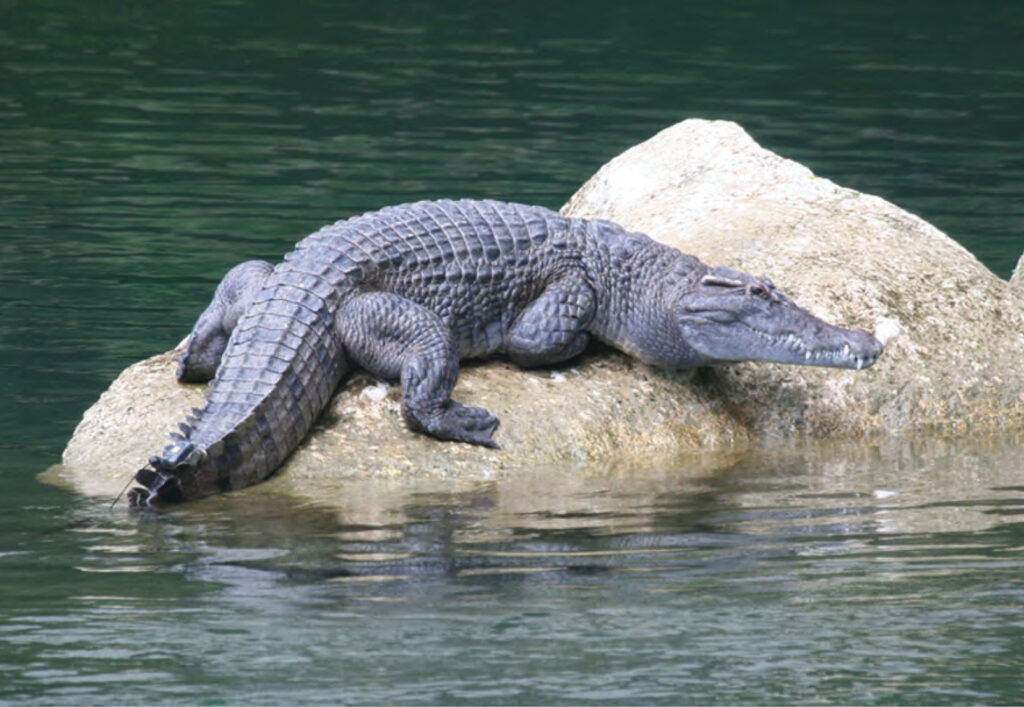
The Philippine crocodile (Crocodylus mindorensis) ranks among the world’s most endangered crocodilians, with fewer than 100 mature individuals surviving in fragmented wetland habitats across the Philippine archipelago. Unlike their larger and more aggressive relative, the saltwater crocodile, these relatively small freshwater crocodiles rarely exceed six feet in length and are not considered dangerous to humans, yet they have been relentlessly persecuted out of fear and misconception. Habitat destruction has claimed over 90% of their wetland habitats across the Philippines, while illegal fishing methods, including dynamite and electrofishing, have devastated remaining populations. Community-based conservation programs like the Mabuwaya Foundation have made remarkable progress in changing local attitudes, establishing protected sanctuaries, and involving communities in nest protection and head-starting programs. These efforts have stabilized some populations in northern Luzon, though the species remains perilously close to extinction without continued protection and habitat restoration.
Rough-nosed Horned Lizard: Sri Lanka’s Forest Floor Jewel
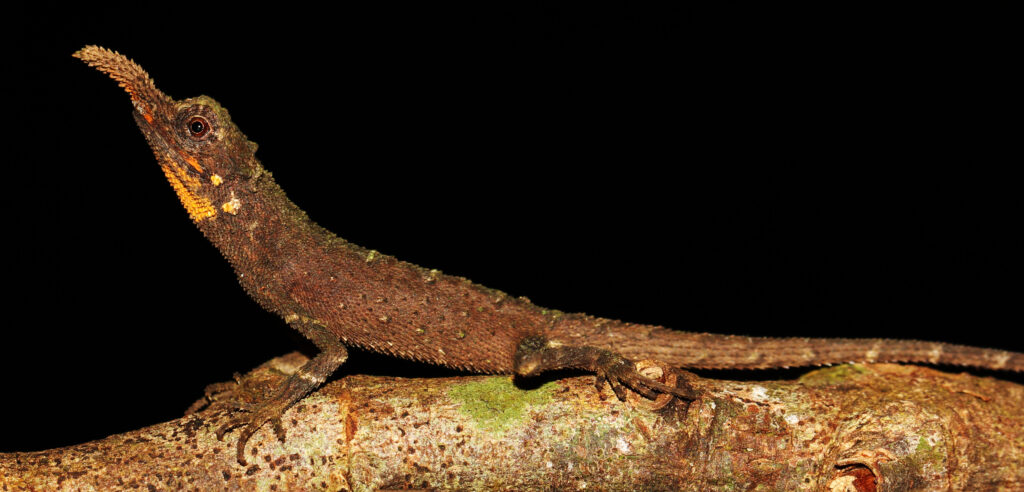
The rough-nosed horned lizard (Ceratophora aspera) epitomizes the crisis facing countless lesser-known reptile species, with this tiny endemic lizard from Sri Lanka’s southwestern rainforests facing extinction due to deforestation and habitat fragmentation. Distinguished by their unique rostral appendages that resemble horns, these charismatic lizards measure just a few inches long and depend on the specific microclimate of the rainforest floor. Over 60% of Sri Lanka’s original rainforest has been cleared for tea and rubber plantations, with remaining habitat increasingly fragmented. Conservation efforts focus on protecting remaining forest patches and establishing corridors between protected areas, though little dedicated funding exists for this species compared to more charismatic megafauna. Researchers at the University of Peradeniya are studying their ecology and reproductive behavior to develop targeted conservation strategies, while local conservation groups work to establish community protected areas in remaining habitat fragments.
Bermuda Rock Skink: An Island Endemic on the Edge
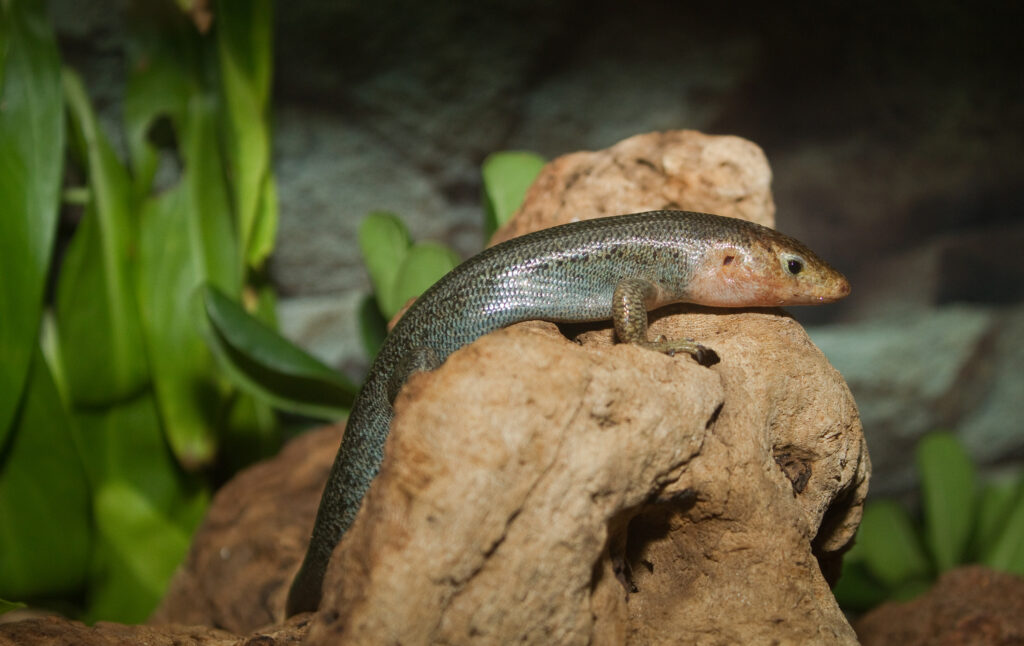
The Bermuda skink (Plestiodon longirostris), Bermuda’s only endemic terrestrial vertebrate, exemplifies how introduced species can devastate island reptiles, with fewer than 2,500 mature individuals remaining in isolated rocky coastal areas. These shiny, brownish-black lizards with orange markings on their face and tail have inhabited Bermuda for over 400,000 years but face a gauntlet of introduced predators including cats, rats, kiskadee flycatchers, and anole lizards that prey on eggs and juveniles. Additional threats include habitat loss from development, mortality from discarded bottles and cans that trap and kill them, and human-caused fires in coastal vegetation. The Bermuda Department of Environment and Natural Resources maintains a captive breeding program at the Chester Zoo in the UK, with plans for population reinforcement in protected nature reserves. Recent conservation efforts have focused on removing invasive plants and restoring native vegetation in skink habitat, though the species remains perilously close to extinction without continued intensive management.
Hawksbill Sea Turtle: Targeted for Their Beautiful Shells
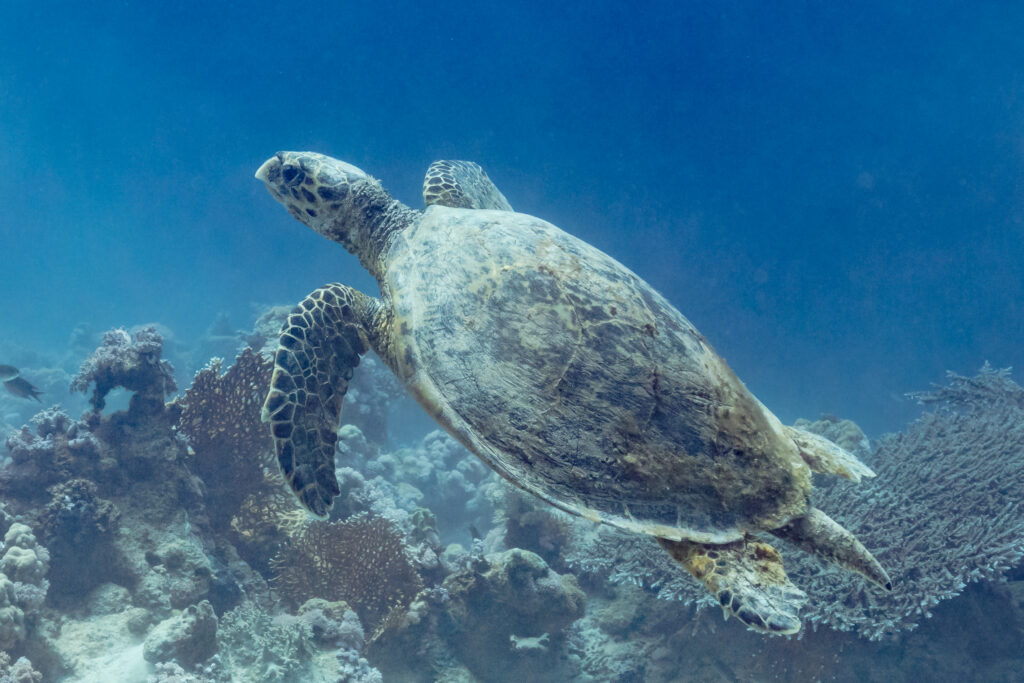
The hawksbill sea turtle (Eretmochelys imbricata) faces global extinction primarily due to the centuries-old trade in “tortoiseshell,” their beautifully patterned shell plates that have been fashioned into jewelry, combs, and decorative items. Although international trade has been banned since 1977 under CITES, illegal harvesting continues in many regions, with populations declining more than 80% globally over the past century. These medium-sized sea turtles play a crucial ecological role as sponge predators on coral reefs, helping maintain reef health by preventing sponge overgrowth. Conservation efforts include strict protection of nesting beaches across their tropical range, satellite tracking to identify migration corridors for protection, and community-based monitoring programs that employ former turtle hunters as conservationists. Recent successes include population increases in the Caribbean following decades of protection, though the species remains critically endangered globally with particular concerns about declining Pacific populations.
Tarzan’s Chameleon: Madagascar’s Rapidly Vanishing Forest Dweller
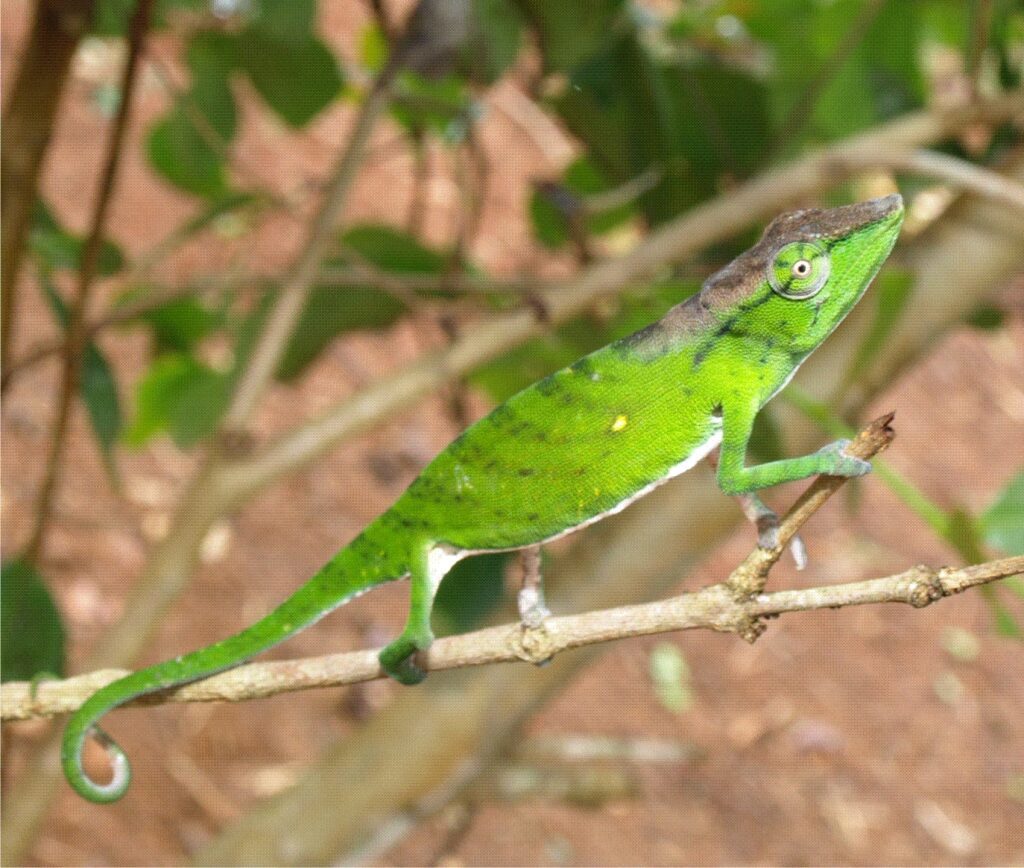
Discovered only in 2009 and already facing extinction, Tarzan’s chameleon (Calumma tarzan) is restricted to a tiny fragment of rainforest in east-central Madagascar smaller than 10 square kilometers. This vividly colored chameleon represents the crisis facing Madagascar’s unique reptile fauna, where deforestation for agriculture, illegal logging, and charcoal production has claimed over 90% of the island’s original forest cover. Surveys suggest fewer than 250 mature individuals remain as the forest fragment they inhabit continues to shrink annually despite its nominal protected status. Conservation efforts by the Malagasy government and international NGOs focus on strengthening protection of the Ambatovy-Analamay forest corridor where the species lives, working with local communities on sustainable livelihoods that don’t require forest clearing. A captive assurance population has been established at the Mitsinjo breeding facility in Madagascar as a genetic reservoir, though scientists believe saving the wild population and its habitat represents the only viable long-term solution.
The Central American River Turtle: Ancient Survivor in Modern Crisis
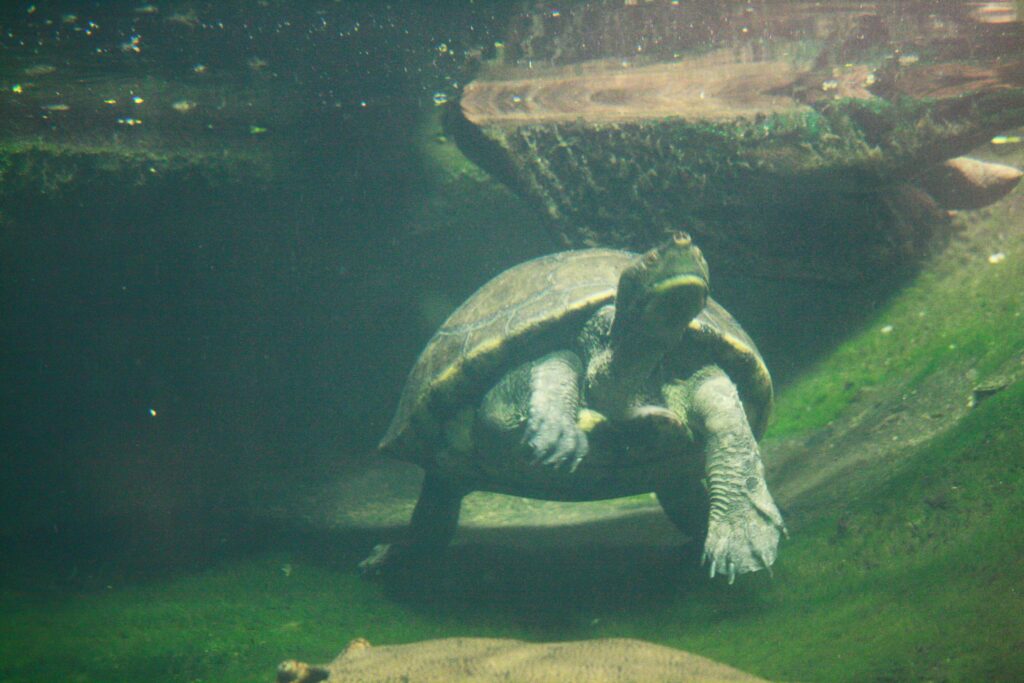
The Central American river turtle (Dermatemys mawii), locally known as the hicatee or tortuga blanca, represents one of the most evolutionarily distinct and endangered freshwater turtles in the world, with a lineage dating back over 65 million years. Found in rivers, lagoons and wetlands from southern Mexico through Belize to Guatemala, this large aquatic turtle has declined by over 85% in the past three generations due to overharvesting for its meat, which is considered a delicacy throughout its range and particularly sought after for Easter celebrations. Unlike many turtles, they’re entirely aquatic and breathe underwater through specialized cloacal respiration, making them highly vulnerable to fishing nets and traps. Conservation initiatives include captive breeding at the Belize Foundation for Research and Environmental Education, establishment of protected areas in key watersheds, and community education programs to reduce harvesting pressure. Recent enforcement of wildlife protection laws in Belize has shown promising results, though recovery remains challenging given their slow reproductive rate.
Conservation Strategies: What Works for Endangered Reptiles?

Successful reptile conservation typically combines multiple approaches tailored to specific threats facing each species, with the most effective programs addressing both immediate survival and long-term viability. Habitat protection represents the foundation of recovery efforts, as even the most intensive breeding programs ultimately fail without suitable release sites with minimal threats. For species decimated by invasive predators, techniques like headstarting (protected rearing of hatchlings), predator-proof enclosures, and targeted removal of non-native species have proven effective, as demonstrated with the Jamaican iguana. Community engagement plays a crucial role, particularly in regions where reptiles are harvested for food or traditional medicine, with programs that provide alternative livelihoods or integrate local people as conservation rangers showing the greatest success. Genetic management has become increasingly important for species reduced to tiny populations, with studbooks and molecular analysis guiding breeding decisions to maintain diversity and avoid inbreeding depression. The most promising model appears to be multi-faceted recovery programs that combine captive breeding for population reinforcement, habitat restoration, threat reduction, and long-term monitoring to track recovery.
The Future: Climate Change and Emerging Challenges

Climate change presents perhaps the most pervasive threat to reptile recovery efforts, with cascading impacts that may undermine even well-designed conservation programs. Many reptiles have temperature-dependent sex determination, where incubation temperature determines whether eggs develop as males or females—a mechanism particularly vulnerable to warming temperatures that could skew sex ratios and lead to population collapse. Rising sea levels threaten coastal species like sea turtles and island endemics, while changing precipitation patterns may disrupt breeding cycles and food availability for species already at the edge of extinction. Emerging infectious diseases pose another significant concern, with pathogens like snake fungal disease and ranavirus increasingly documented in wild populations worldwide. Despite these challenges, technological innovations offer new hope, including environmental DNA monitoring to detect rare species, genome banking to preserve genetic diversity, and assisted colonization for species whose habitat may become uninhabitable. The fate of the world’s most endangered reptiles ultimately depends on our collective willingness to address not just immediate threats but the underlying drivers of environmental change that imperil these ancient lineages.
Conclusion: The Race Against Extinction
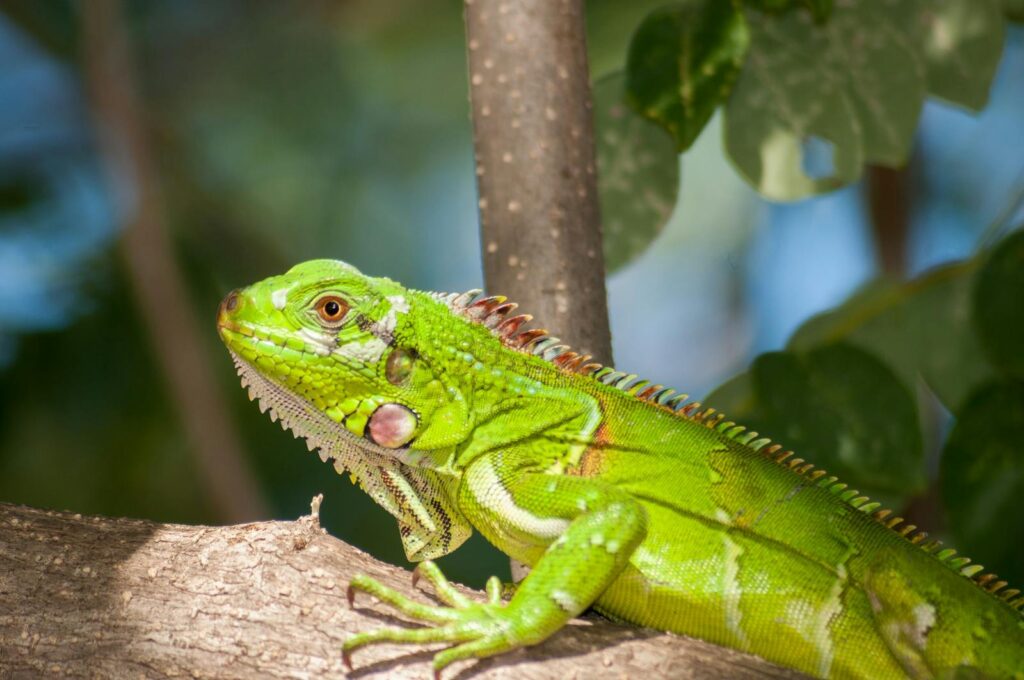
The precarious state of the world’s most endangered reptiles reflects both the devastating impact of human activities on biodiversity and our capacity to reverse these trends through dedicated conservation efforts. Success stories like the Grand Cayman blue iguana and Jamaican iguana demonstrate that even species on the very brink of extinction can recover when given adequate protection, resources, and scientific management. However, these success stories remain the exception rather than the rule, with many critically endangered reptiles receiving minimal conservation attention compared to more charismatic mammals and birds. Reptiles have survived for hundreds of millions of years through multiple mass extinctions, yet their adaptations provide little defense against habitat destruction, targeted harvesting, and invasive species. As we face a biodiversity crisis of our own

